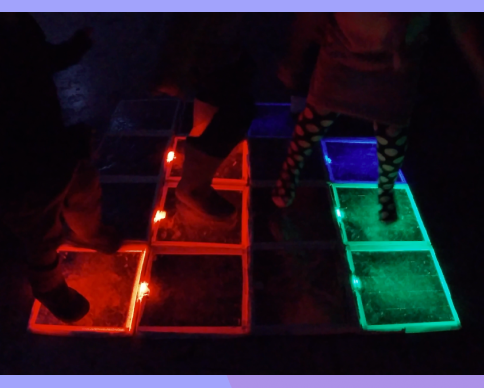Summary: To spruce up Swedish playgrounds during the winter, I designed, tested, and
prototyped light-up tiles!
Skills: User testing with children, iterative rapid design, bodystorming, microcontrollers.
Time spent: 3 months.
Budget: 1000SEK (~98 USD).
Team: David Ekman, Iza Grasselli, Annkatrin Jung, Eva-Maria Veitmaa, Aidan Kidder-Wolff




